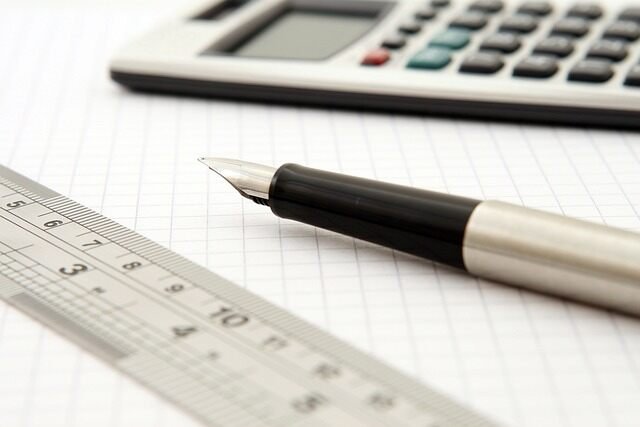Function Mathematics
In mathematics, a function allows you to define a result (usually numeric) for each value in a set called a domain. This result can be obtained by a series of arithmetic calculations or by a list of values, especially in the case of taking physical measurements, or by other methods such as solving equations or crossing the limit. The actual calculation of the result or its approximation may be based on the development of an IT function.
In set theory, a function or application is a relation between two sets for which each element of the first is related to a single element of the second. Sometimes, we distinguish the notion of function by weakening the condition as follows: each element of the first set is related to at most one element of the second.
In type theory, a function is the description of the method to obtain the result from its parameters. In other words a function is the algorithm which makes it possible to calculate it.
Read also: Mean Mathematics | Examples, Questions and Answers
A function is a process or a relation that associates each element x of a set X, the domain of the function, to a single element y of another set Y (possibly the same set), the codomain of the function. It is customarily denoted by letters such as f, g and h.
If the function is called f, this relation is denoted by y = f (x) (which reads “f of x“), where the element x is the argument or input of the function, and y is the value of the function, the output, or the image of x by f. The symbol that is used for representing the input is the variable of the function (e.g., f is a function of the variable x).
Read also: Math Symbol | What Does This Symbol Mean in Mathematics?
A function is uniquely represented by the set of all pairs (x, f (x)), called the graph of the function. When the domain and the codomain are sets of real numbers, each such pair may be thought of as the Cartesian coordinates of a point in the plane. The set of these points is called the graph of the function; it is a popular means of illustrating the function.
RULES
The number with which should be multiplied is always in front of the variable.
So when is it allowed?
– A number and a variable: 3 × a = 3a
– Two variables: a × b = ab *
– A number and a bracket: (3 + a) × 5 = 5(3 + a)
– A variable and a bracket: a × (a + 8) = a(a + 8)
– Two brackets: (a + 3) × (a2 – 4) = (a + 3)(a2 – 4)
– A number and a symbol: 5 × π = 5π
* This is the reason you may not abbreviate a variable to two letters. nop always means n × o × p. For that reason you cannot shorten Number of pupils to nop.
Examples
| Formula | Shortened |
| 3 × a + 8 × a2 + 5 | 3a + 8a2 + 5 |
| a × 7 + 8 × (3 × a + 7) | 7a + 8(3a + 7) |
| (7 × b + b2 × –4) × –3 | –3(7b – 4b2) |
With the function notation you can easily give you formulas different names.
Often f (x) and g(x) are used.
But you can also have for example A(t) and B(t).
Below you will find a couple of formulas written as a function.
| Formula | Function |
| b = 3a + 7 | f (a) = 3a + 7 |
| b = –4m + 12 | g(m) = –4m + 12 |
| y = 7x – 3x2 | h(x) = 7x – 3x2 |
How do you work with a function?
This works the same as with formulas, however the notation is slightly different.
Examples
| Function | Calculate | Filled in value | Answer |
| f (x) = 2x + 5 | f (7) | f (7) = 2 × 7 + 5 | f (7) = 19 |
| T(h) = 7h2 – 4 | T(3) | T(3) = 7 × 32 – 4 | T(3) = 59 |
| z(a) = 6a2 – 3 | z(–8) | z(–8) = 6 × (–8)2 – 3 Brackets in the power! | z(–8) = 381 |
| g(t) = –5t + 2 | g(t) = –8 | –8 = –5t + 2 | t = 2 |
Examples
In your exercise there should always be a formula and a certain value of one the variables given. Fill in the given value into the variable of the formula (change/substitute the variable for the given number). This way you will get a calculation of which you can calculate the answer or an equation you can solve.
Examples
| Formula | Value | Filled in the value | Answer |
| y = 3x + 7 | x = 4 | y = 3 × 4 + 7 | y = 19 |
| b = –7 + 6a | a = –5 | b = –7 + 6 × –5 | b = –37 |
| m = 7p – 3q | p = –2 and q = 4 | m = 7 × –2 – 3 × 4 | m = –26 |
| y = 2x2 – 5x | x = –3 | y = 2 × (–3)2 – 5 × –3 Brackets in the power! | y = 33 |
| g = 5h – 8 | g = 47 | 47 = 5h – 8 | h = 11 |
Examples function problem solving examples with answers
1. Perform the indicated evaluations for: f(x)=3-5x-2x²
A. f(4)
B. f(0)
C. f(−3)
D. f(6−t)
E. f(7−4x)
F. f(x+h)
Solutions:
A. f(4)
f(4)=3−5(4)−2(4)²=−49
B. f(0)
f(0)=3−5(0)−2(0)²=3
C. f(−3)
f(−3)=3−5(−3)−2(−3)²=0
D. f(6−t)
f(6−t)=3−5(6−t)−2(6−t)²
=3−5(6−t)−2(36−12t+t²)
=3−30+5t−72+24t−2t²
=−99+29t−2t²
E. f(7−4x)
f(7−4x)=3−5(7−4x)−2(7−4x)²
=3−5(7−4x)−2(49−56x+16x²)
=3−35+20x−98+112x−32x²
=−130+132x−32x²
F. f(x+h)
f(x+h)=3−5(x+h)−2(x+h)²
=3−5(x+h)−2(x²+2xh+h²)
=3−5x−5h−2x²−4xh−2h²
2. If f h is defined by: h(x) = 3 x 2 – 7 x – 5µ
find h(x – 2).
Solution to Question 4:
Substitute x by x – 2 in the formula of function h
h(x – 2) = 3 (x – 2) 2 – 7 (x – 2) – 5
Expand and group like terms
h(x – 2) = 3 ( x 2 – 4 x + 4 ) – 7 x + 14 – 5
= 3 x 2 – 19 x + 7
3. Does the equation y² + x = 1 represents a function y in terms of x?
Solve the above equation for y
y²= 1 – x
y = + √(1 – x) or y = – √(1 – x)
For one value of x we have two values of y and this is not a function.
4. If f is defined by: f(x) = – 2 x 2 + 6 x – 3
find f(- 2).
Solution:
Substitute x by -2 in the formula of the function and calculate f(-2) as follows:
f(-2) = – 2 (-2) 2 + 6 (-2) – 3
f(-2) = -23
5. If f and g are defined by: f(x) = – 7 x – 5 and g(x) = 10 x – 12
find (f + g)(x)
Solution:
(f + g)(x) is defined as follows
(f + g)(x) = f(x) + g(x) = (- 7 x – 5) + (10 x – 12)
Sources: Math is Fun,


